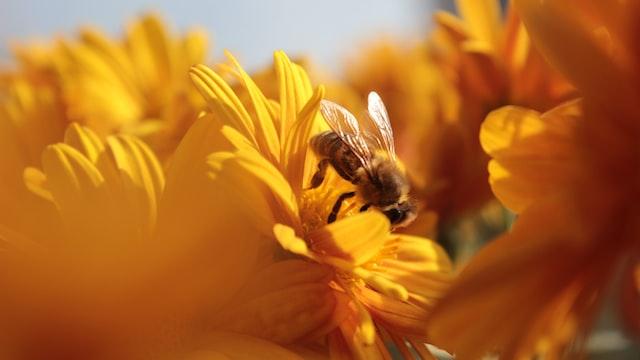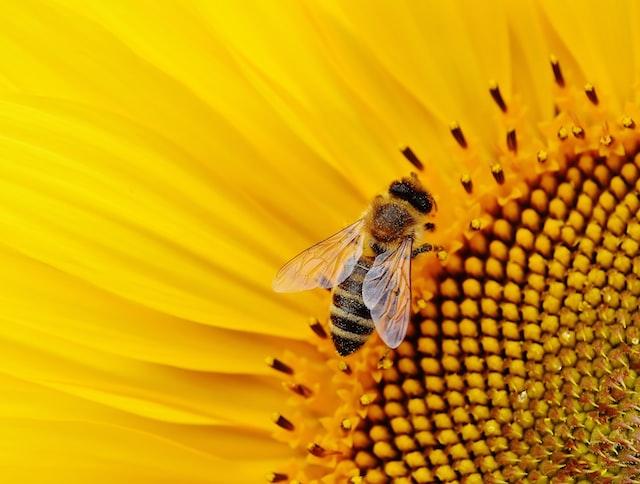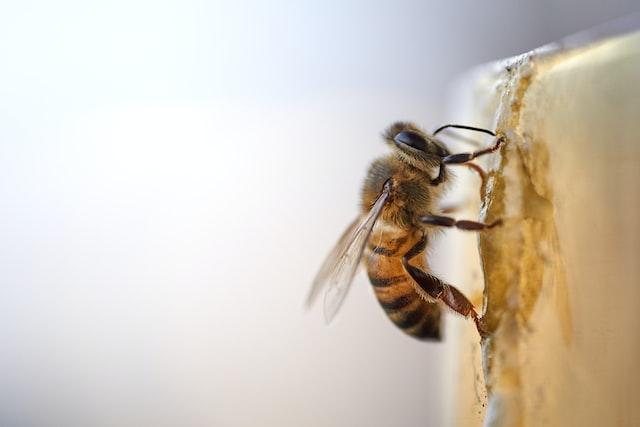
Honey is delicious and nutritious, without a doubt. The thing that makes honey so unique is how it’s produced. The lives of honey bees are dedicated to the colony’s success.
Every bee has a duty to perform, and in order for the colony to flourish, it must be completed. Honey production and storage are two methods in which bees work to ensure the success of the hive.
We think the process of generating honey is incredible! Let’s learn more about how bees produce honey and why they do it. But first, here are a few amazing facts about honey that you may not believe!
Why do bees make honey?
Bees produce honey for two main reasons: to feed themselves and to feed their young.
During the winter months, when there are no flowers blooming and little nectar to be found, the bees rely on their stores of honey to survive.
The honey provides them with the energy they need to keep warm and stay alive until spring arrives.
Bees also use honey to feed their larvae. The larvae consume the honey and then excrete it as wax, which the bees use to build their hive. Thus, honey is essential for the survival of the bee colony.
Read also: How Fast Can a Cheetah Run
How do bees make honey?
The bee begins the process by collecting nectar from flowers using its long tongue. Once the nectar is stored in the bee’s honey stomach, also known as the crop, an enzyme is added to it.
This enzyme breaks down the sucrose in the nectar into glucose and fructose.
As the bee returns to the hive, other bees consume the nectar. In the process of consuming the nectar, more enzymes are added to the mixture.
These enzymes further break down the sucrose into glucose and fructose.
When the bee regurgitates the partially digested nectar into a honeycomb cell, water evaporates from it. This causes the ratio of glucose to fructose to increase and the mixture to become more viscous.
Once the honeycomb cell is sealed with beeswax, the water content in the honey continues to decrease as evaporation occurs.
This makes the honey more concentrated and sweeter.

How does the color of honey vary?
The color of honey can range from water-white to dark brown. The color is determined by the type of flowers that the bees collect nectar from.
For example, honey made from the nectar of orange blossoms is usually light-colored, while honey made from the nectar of buckwheat flowers is usually dark-colored.
The precise color of honey also depends on factors such as the bee species, the age of the honey, and whether the honey has been filtered.
However, in general, darker honey tends to have a stronger flavor than lighter honey.
Read also: Are Mosquitoes Attracted to Certain Blood Types
Do all honey bees make honey?
Of the 20,000 bee species in the world, only about 4,000 are capable of making honey. The most common type of honey bee in the world is the European honey bee.
This species is responsible for the majority of honey production around the globe.
In North America, the most common type of honey bee is the Western honey bee. This species was brought over by European settlers in the early 1600s.
Today, these bees are used to pollinate crops and produce honey.
The process of making honey is rather long and complicated. In addition, it requires specific weather conditions and an adequate food supply. For these reasons, not all bee species produce honey.
Honeybees are vital to our ecosystem and their populations have been declining in recent years. It’s important to do what we can to protect these hardworking insects.
How do bees make honey from pollen?

Bees collect pollen from flowers using their hairy bodies and legs. They then store the pollen in sacks on their hind legs. When they return to the hive, they deposit the pollen into cells.
The bees mix the pollen with saliva and enzymes, which break down the protein in the pollen into amino acids. The bees then regurgitate the mixture, which is called “bee bread”, back into the cell.
Water evaporates from the bee bread, which makes it more nutritious and easier to digest. The bees then consume the bee bread to get the protein they need to build their bodies and produce wax.
Read also: Do Insects Have Brains
How much honey does a beehive produce?
The average beehive can produce 60 to 100 pounds of honey per year. However, there are many factors that can affect honey production, such as the weather and the type of flowers available for the bees to collect nectar from.
For example, if the weather is too cold or wet, the bees will be less active and will produce less honey.
Similarly, if there are fewer flowers blooming, the bees will have less nectar to collect and will again produce less honey. Consequently, the amount of honey that a beehive produces can vary considerably from one year to the next.
Read also: How Are Alligators And Crocodiles Different
Final Thought
The process of making honey is amazing and intricate. bees collect nectar from flowers and then store it in their honey stomachs.
The nectar mixes with enzymes that break down the sucrose into glucose and fructose. When the bee returns to the hive, the nectar is regurgitated and stored in honeycomb cells.
The bees fan their wings to evaporate moisture from the nectar, which thickens and transforms into honey. Finally, the bees cap the cells with wax to seal in the honey.
This process results in a portion of delicious, nutrient-rich food that can be enjoyed by humans and animals alike.



